Mastering Communication: The Introvert’s Guide
Your heart started to race at the mere thought of introducing yourself at a gathering – It’s a common plight for introverts like you and me. I remember my first days at a networking event, feeling like a deer in headlights as I scanned the room filled with unfamiliar faces.
But what if I told you that mastering communication isn’t just about being extroverted? In fact, it can be a journey tailored specifically for us introverts.
Let’s explore some unconventional techniques and personal experiences to help you navigate the world of social interactions with ease.
Understanding the Introvert’s Dilemma
The world around us can feel overwhelming, especially if you identify (or self proclaimed) as an introvert. Many introverts experience a severe fear of judgment and rejection. This fear can create a barrier between you and social situations. Can you relate? You’re not alone.
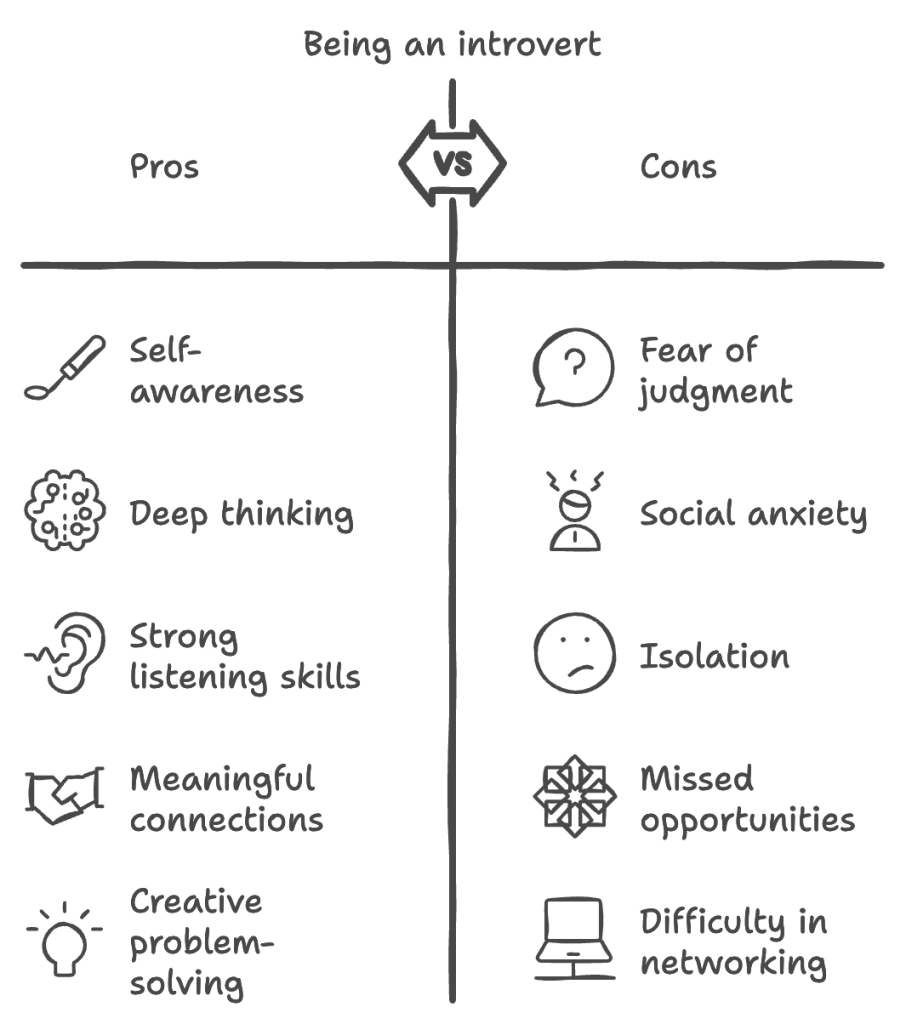
The Introvert’s Perspective
Introverts often find themselves in a unique dilemma. On one hand, we want connection. On the other, anxiety complicates those social interactions. You might wonder, “What if I say the wrong thing?” or “Will they think I’m awkward?” These thoughts can freeze you in your tracks, making socialising feel daunting.
Fear of Judgment and Anxiety
The fear of being judged often weighs heavier for introverts. Did you know that 95% of introverts experience fear of judgment in social settings? This statistic highlights how common these feelings are. Furthermore, social anxiety can lead to misunderstandings. This leads to a false narrative that introverts dislike people, when in reality, they might just be grappling with their fears.
Balancing Introversion and Connection
So, how do you find that balance? It’s essential to acknowledge that you may need social connections, despite your introverted nature. Finding a comfortable space where you can express yourself genuinely can make a huge difference. Consider this: instead of trying to extinguish your introverted side, embrace it. Seek out deeper conversations over small talk. As one insightful observation puts it,
“Introverts are often misunderstood; we thrive in deep conversations rather than superficial ones.”
Recognising the Spectrum of Introversion
Introversion is not a one-size-fits-all label. It exists on a spectrum. Some introverts are very shy, while others might be more adaptable in social settings. Knowing where you stand can help you navigate your social life more effectively.
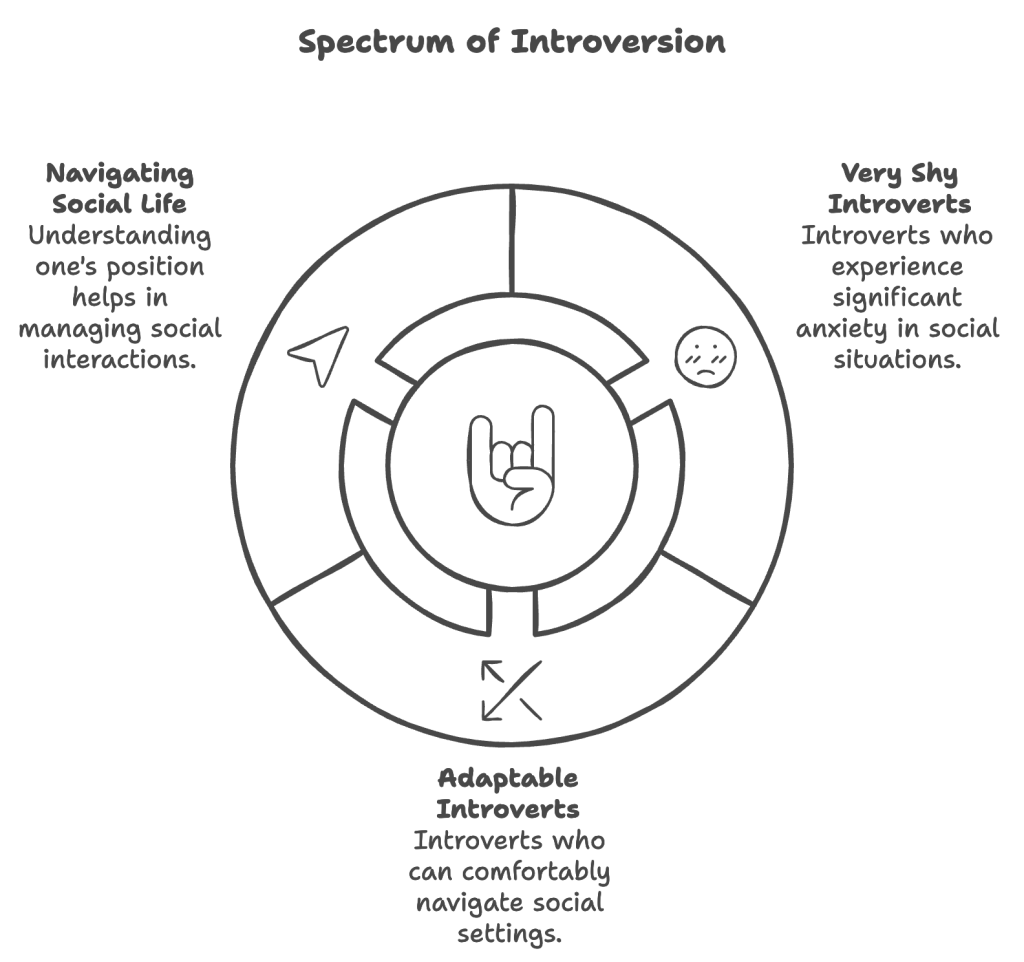
Statistical Insight
Here’s a look at some relevant statistics regarding introversion:
| Statistic | Percentage |
|---|---|
| Population identifying as introverted | Up to 30% |
| Introverts experiencing fear of judgment | 95% |
Understanding the introvert’s dilemma is just the first step. Acknowledging your fears and recognising your true self allows room for meaningful connections. Hence, don’t shy away from social situations, but rather embrace them. You possess the capability to transform your social experiences into something more fulfilling.
Desensitisation: The Path to Overcoming Fear
Fear can be paralysing, especially when it comes to rejection. You might wonder, “How do I overcome this feeling?” The answer lies in *desensitisation*. This method helps you gradually face your fears. Here, we’ll explore some effective techniques to tackle the fear of rejection.
1. Techniques to Desensitize the Fear of Rejection
- Gradual Exposure: Start small. Visit a coffee shop and ask for a free drink. It may feel awkward, but with practice, you’ll grow more comfortable.
- Accepting “No”: Remember, a rejection doesn’t define your worth. Each “no” can be a step toward resilience.
- Role-Playing: Enlist a friend for practice. Simulating rejection scenarios lets you gain confidence in a safe space.
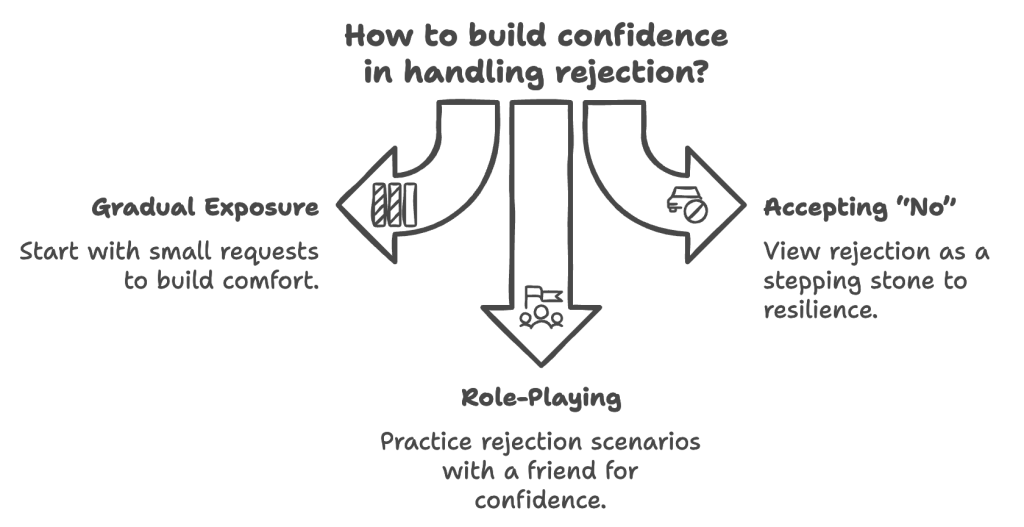
2. Real-Life Examples: Building Resilience After Rejections
Consider a famous artist who faced numerous rejections before finding success. Each “no” was a stepping stone, not a roadblock. They learned to view rejection as part of the creative journey. Similarly, you can transform your experiences. Think about your own life. Have you faced rejection? Maybe you didn’t get a job you wanted. Instead of dwelling on it, try to see it as a *growth opportunity*.
3. Transforming Negative Experiences Into Growth Opportunities
Every setback is a chance for growth. When you reframe your mindset, you begin to see failures as learning experiences. This transformation deepens your emotional intelligence. It prepares you better for future challenges. Remember the quote:
“Rejection is simply a part of the journey; how we respond defines our path.”
4. Steps You Can Take in Your Daily Life
- Practice Small Interactions: Say hello to three new people each week.
- Explore Vulnerability: Share your thoughts openly, even if it feels uncomfortable.
- Track Your Progress: Keep a journal of your experiences and revisit them to see improvements.
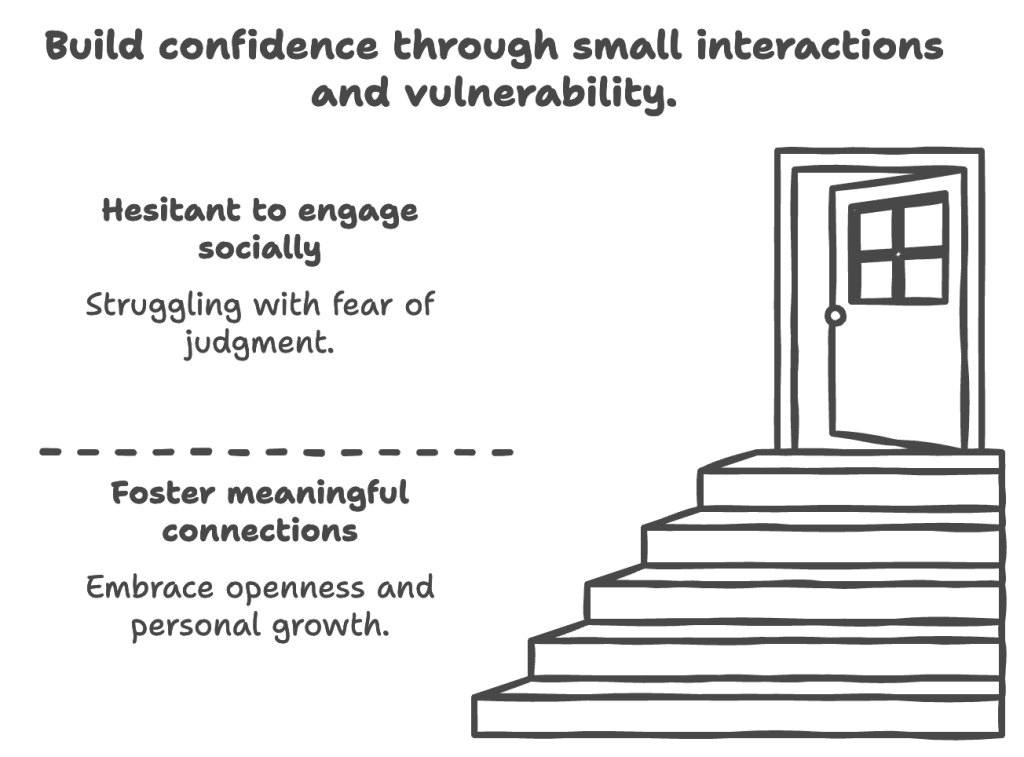
Interestingly, statistics show a 25% improvement in self-reported social anxiety after individuals practiced desensitisation techniques. You can harness these methods in your life, step by step, leading to a more confident you!
Ultimately, the journey towards overcoming your fear of rejection requires practice and patience. By applying these techniques and embracing discomfort, you will undoubtedly pave your path towards growth and resilience.
Building Confidence Through Small Interactions
Are you struggling with confidence when it comes to interacting with others? It can be daunting. The good news is, building confidence is possible through small daily challenges. Here are some practical strategies you can apply.
1. Daily Challenges: Saying Hello to Strangers
What’s more refreshing than a friendly greeting? Try saying hello to at least three strangers each day. This simple act can feel uncomfortable at first, but it builds your confidence. Each hello is a small victory—a stepping stone toward being more socially comfortable.
2. Creative Propositions: Asking for a Free Coffee
Imagine walking into a coffee shop and asking for a complimentary beverage. Sounds bold, right? But think about this: you might be surprised by the positive responses you receive! No matter if they say yes or no, you’re training yourself to face rejection. Rejections do not define your worth.
3. The Art of Complimenting to Spark Conversations
Did you know that a smile and a compliment go a long way? Next time you meet someone, compliment them sincerely. Maybe it’s their hairstyle or a unique accessory. The best part? According to statistics, 70% of people respond positively to unsolicited compliments. It’s a guaranteed conversation starter!
4. Implementing Gradual Exposure in Your Routine
Managing anxiety can be easier with gradual exposure. Start small! Set daily goals that are achievable. This can range from saying hello to a coworker to joining a group discussion. Gradually increase your interactions as you become more comfortable.
“Every small win counts; each interaction builds your confidence like bricks in a wall.”
Success Stories
It’s inspiring to hear success stories from individuals who have turned their fears into triumph. People just like you have gained immense confidence by embracing these challenges. Transforming how you interact can lead to moments of genuine connection.
The Importance of Positive Experiences
Ultimately, these small, positive experiences play a significant role in building overall confidence. They create a ripple effect. As you become more comfortable with expressing yourself, your social anxiety will diminish. Tiny changes can yield powerful results over time.
Charting Your Progress
Let’s visualize that data about unsolicited compliments:
| Response Type | Percentage (%) |
|---|---|
| Positive Responses | 70 |
| Negative Responses | 30 |
Take these insights to heart. The journey of building confidence through small interactions starts with you. Embrace the challenge, and enjoy the process!
Communication plays a vital role in our lives. It can either create or ruin a connection. Have you ever noticed when someone tries to outdo your story? That’s called one-upping. It often disrupts genuine conversations and breeds competition instead of connection.
Understanding one-upping is the first step toward fostering meaningful dialogue.
Understanding One-Upping in Conversations
One-upping occurs when someone shares a similar experience to outshine yours. Instead of building rapport, they risk shutting you down. For instance, if you share a personal loss, they might talk about their much greater loss. This not only derails the conversation but also deters emotional sharing. You must counter this by embracing humility in conversations.
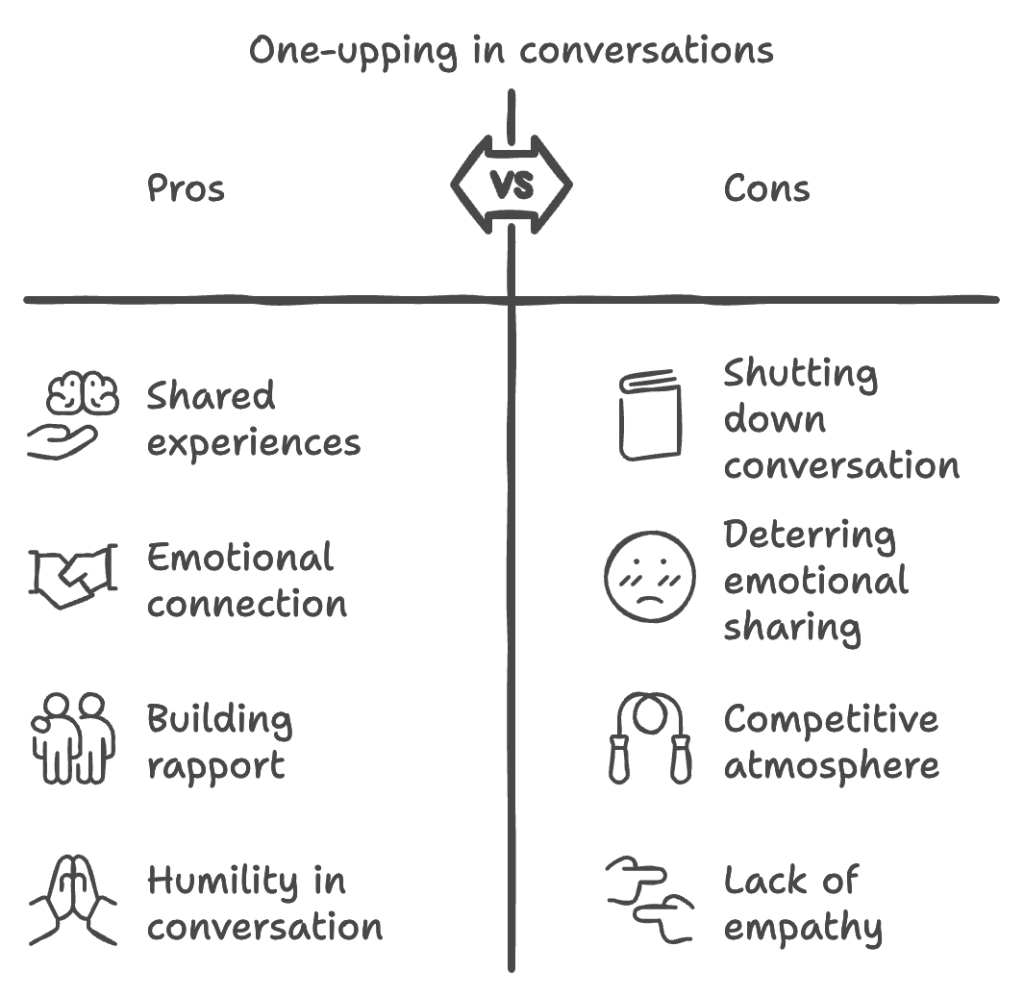
How to Ask Engaging Questions That Foster Rapport
Instead of leading with your experiences, try asking questions that allow others to share. Consider these:
- What has been your most memorable moment lately?
- How did you feel when that happened?
- What did you learn from that experience?
These questions help create a platform for deeper dialogue. Remember, asking engaging questions reflects your interest in the other person’s life, ultimately creating a more valuable connection.
Empathy Over Competition: Building Genuine Connections
Shifting from a competitive mindset is essential. When you prioritize empathy, you create a space for others to be open with their feelings. Remember the quote:
“True connectivity comes from understanding, not just sharing.“
Block out distractions. Focus fully on the speaker. Recognising their emotions and experiences can foster trust and sincerity in your interactions.
Learning to Listen Actively Versus Dominating Conversations
Listening actively is just as critical as speaking. Studies suggest that emotions influence connection by 80%. By improving your listening skills, you can significantly enhance your social dynamics.
Instead of jumping in with your tale, pause and absorb what others say. Ask follow-up questions that dive deeper into their experiences. This way, you validate their feelings and demonstrate that their story matters.
In conversations, building empathy and rapport requires practice. One way to develop empathetic communication techniques is by observing interactions in your daily life. Reflect on what works and consider how you can improve your approach. You can even share your experiences with friends and family to create an understanding around your communication style.
Learning these skills won’t happen overnight. But remember, small steps toward better communication can yield profound results. Keep striving for genuine connections where both parties feel valued and understood. Every effort counts.
Priming Your Close Circle: Communicating Change Effectively
Have you ever wanted to change how you communicate but didn’t know how your friends and family would react? Understandably, communicating change can be daunting. But preparing your close circle makes the process smoother.
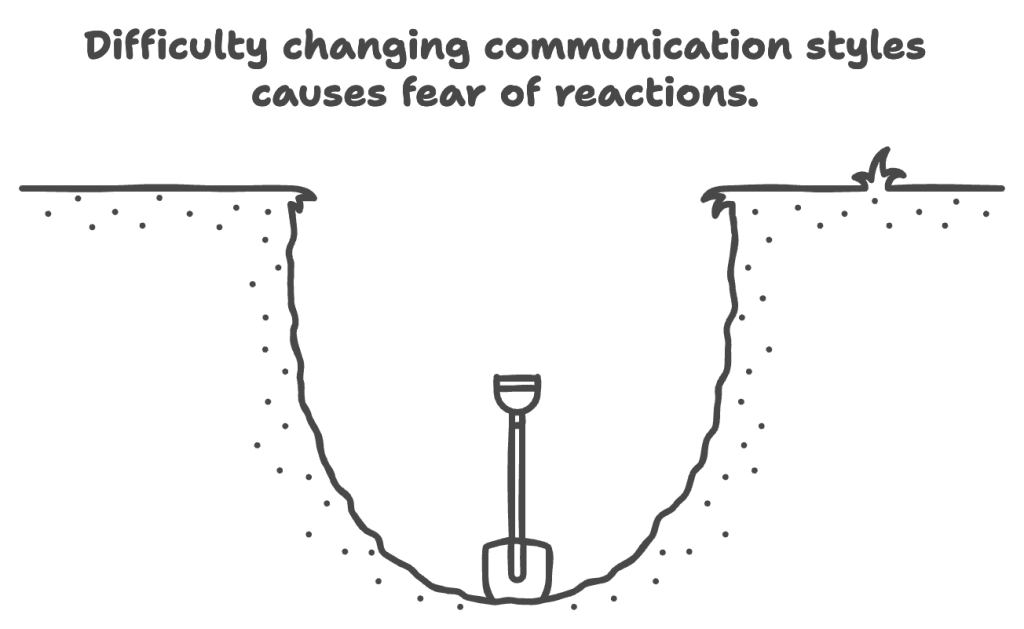
1. How to Prepare Friends and Family
Start by talking to those you trust about your desire to enhance your communication. Share your reasons. Explain what changes you’re considering. What does this new style look like for you? Keep it simple! Use clear, relatable examples. For instance:
- “I want to express my feelings openly instead of bottling them up.”
- “I’m aiming for more engaging conversations by asking questions.”
The concept of ‘priming’ is vital here. By setting the stage for your changes and cultivating understanding, you open a dialogue. This is key for easing any discomfort.
2. Gaining Support Through Understandable Dialogue
When you communicate your needs, use language they can easily grasp. Remember, context is key; it transforms your audience’s perception of who you are becoming. For example, instead of saying:
“I’m evolving my communication style,”
try:
“I want to share my thoughts more sincerely, like when I talk about hobbies I love.”
This helps them see your intentions clearly, fostering support. Anecdotes can make your points more vivid. For instance, consider a story of someone who transformed their relationships by expressing their needs. They might share how their friendships deepened as they started opening up.
3. Success Stories to Inspire Change
When you encourage stories, it offers hope and relatability. People can resonate with those experiences. Perhaps someone struggled with miscommunication at work but thrived after confiding in their loved ones about their fears. Such narratives resonate. They remind us that positive change is possible.
In fact, studies show that 80% of people report increased support from loved ones when they are primed before changes. This statistic reinforces that properly conveying your transformation is essential.
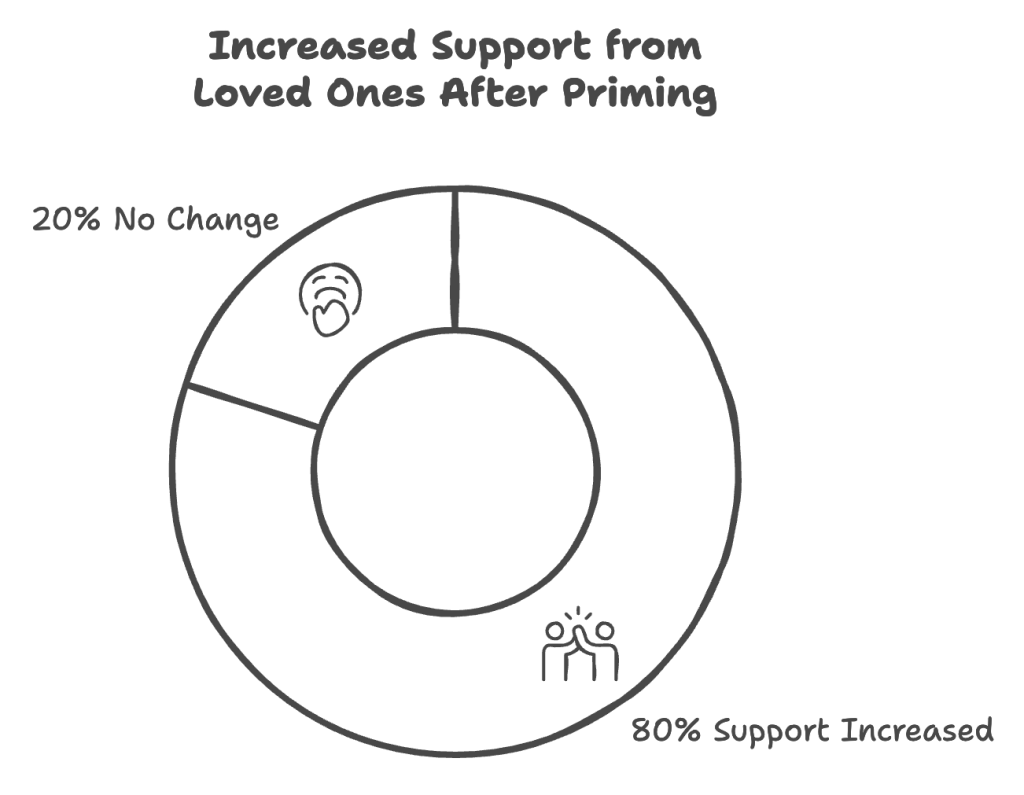
As you embrace communicating authentically, stay attuned to pushback. Not everyone will readily understand your journey. But handling this with patience opens doors. Your loved ones may need time to adapt.
Remember, every small step counts toward better communication. Achieving your goals is not about perfection—it’s about progress!
Conclusion: Your Journey Towards Confident Communication
As you reflect on your journey towards mastering communication, it’s crucial to remember that it’s a gradual process. Each small step counts. Communication skills are not acquired overnight; they develop over time with practice. So, be patient with yourself. You’re progressing, even when it feels slow.
Continued practice is your best ally. The more you engage with others, the more comfortable you will become. Are you willing to take that first step? Don’t expect perfection; instead, aim for improvement. Every conversation is an opportunity. Each interaction allows you to refine your skills.
Kindness and Connection
At the heart of effective communication lies one simple truth: empathy. Emphasising kindness and connection can transform how you interact with others. Think about it: when you communicate with warmth and genuine interest, does it not create a welcoming space? This approach not only enhances your relations but fosters deeper connections.
Sharing is Caring
Encouragingly, you’re not just learning for yourself. As you grow in your ability to communicate, consider sharing these skills with others. You may find that your journey inspires friends or family to improve their communication too. Isn’t that a beautiful cycle? Sharing knowledge creates a community of growth.
“Remember, mastering a skill takes time; embrace the journey as much as the destination.”
In our fast-paced world, effective communication has never been more vital. The power of impactful words can elevate your personal and professional life. As you work towards becoming a more confident communicator, recognize the cumulative effect of your efforts. Each touchpoint counts.
So, take a moment to connect. Engage with others, share your experiences, and cultivate effective communication. You’re not alone on this path. Together, we can make significant strides in how we convey and receive messages. Keep pushing forward; your journey has just begun.
TL;DR: Effective communication is a vital skill for introverts. By desensitising fears and practicing small interactions, you can build confidence and thrive in social settings.






